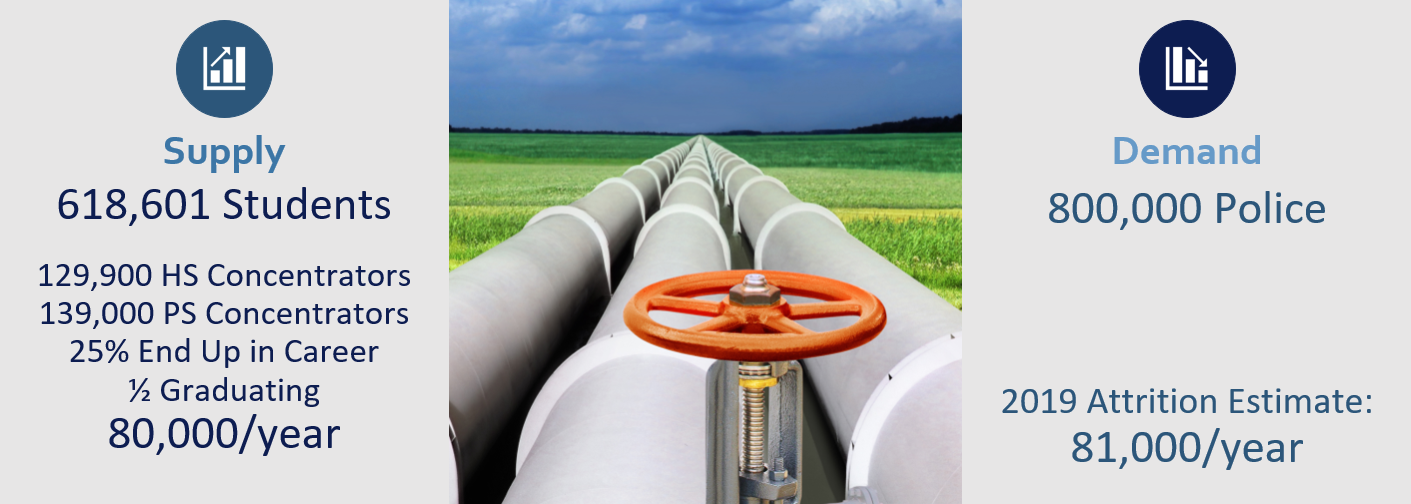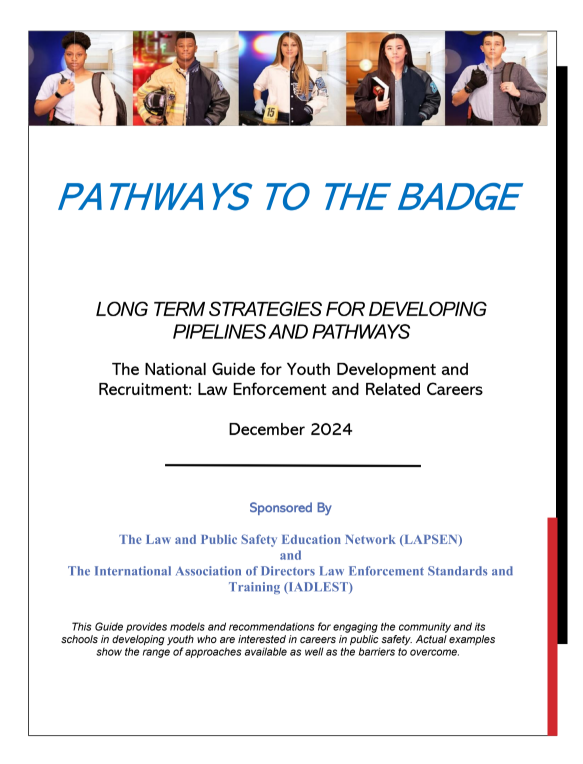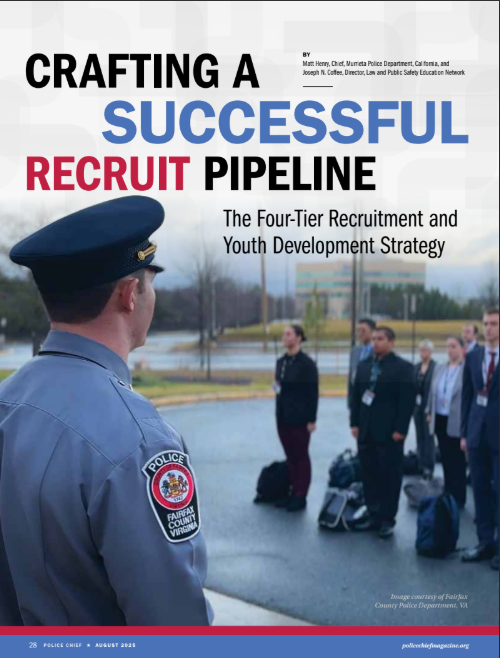Youth to Industry Career Pipeline

Building the Pipeline
In 2019 there were 81,000 openings in law enforcement careers alone. In 2022 there were nearly 620,000 students enrolled in high school and technical college Law and Public Safety (LPS) courses. 268,000 were “concentrators” meaning they are committed to the path of study. If you take a low estimate that 25% of concentrators will enter LPS careers and that about half graduate each year, then there are over 80,000 available a year. And that is a very conservative estimate.
But we lose them. 18 year olds out of high school have limited options in LPS careers. Even tech school graduates may have to wait a year or longer to get through the application process. If this were a funnel – it has way too many holes. LAPSEN, in conjunction with some very foward thinking agencies and schools, is trying to make that funnel into a pipeline. Work Based Learning (WBL), cadet programs, career academies, CTE programs, and many other options are out there. The parts just need assembly.

Current Edition of Pathways to the Badge
Pathways to the Badge
The National Guide for Youth Development and Recruitment in Law Enforcement and Related Careers
LONG TERM STRATEGIES FOR DEVELOPING PIPELINES AND PATHWAYS
LAPSEN and its staff have been involved in targeted pipeline research and studies since 2008. These studies identified an array of strategies that help youth get to know their local law enforcement officers and other staff, help them decide if public safety might be a career that suited them, and provide opportunities to serve in that career. There are three key studies each of which built on the previous one.
The first study was done by California POST and was a guide for Building a Public Safety Career
Pipeline. Started in 2009, the guide was updated in 2014. It provides examples of various models and emphasizes the use of a key ingredient: the incorporation of a comprehensive character and leadership development component that can be woven and reinforced throughout the pipeline cycle.
The second study, funded by the USDOJ/COPS Office, produced the “Youth Law Enforcement
Experience Programs as a Potential Recruitment Pipeline”(the brief) and the full document
authored by the RAND Corp and LAPSEN. Published in 2024, this study identified the various types of programs used by agencies as part of their pipeline strategies. These included school-based programs as well as agency managed programs including youth camps, Explorer type programs, internships, and bridge positions. It does not include youth programs that were not specifically for youth who were interested in law enforcement as a career. The research included more detailed examples of many different approaches currently in use by agencies. This study also funded a directory of programs which is now housed on the LAPSEN website and
can be found here.

Police Chief magazine article on
the LAPSEN pipeline project.
The third study built on the previous two and was published at the end of 2024 by LAPSEN, entitled “Pathways to the Badge”. It identified four sections on tiers of any complete pipeline.
Tier 1 are programs run by agencies typically for youth below high school age and not intended
as a recruitment approach but rather a way to show the community the human and caring side
of law enforcement. Tier 2 includes high school programs both in-school and agency led. Tier 3
covers the “Gap Years”, 18-21, those years between high school and being eligible for the
academy. Tier 4 is the academy and field training. Because what is learned in Tier 4 sets the
model for how public safety staff should behave and what they should be able to do, it is critical
that what is taught here is also reinforced at the other tiers to ensure consistency. In August
2025, a summary of this study was highlighted In Police Chief magazine entitled: “Crafting a
Successful Recruitment Pipeline”.
The current project: An inventory that helps agencies and their communities assess their pipeline and youth development strategy. The inventory builds on what was learned in the three studies and provides an opportunity to assess what an agency and community already has in its strategy and what they might want to add and improve. This effort also provides the opportunity for agencies to develop a separate long-term recruitment strategy along with the short-term strategy that targets hiring those already age-eligible.
Participants in the 2025 LAPSEN conference in Nashville will have the opportunity to review the draft inventory and recommend changes and additions during special sessions. Currently a group of instructors and law enforcement personnel are developing the draft that will be provided for review at the Conference.
The communities, agencies and schools involved are the following:
- Aurora, IL
- Baton Rouge, LA
- Catoosa, GA
- Columbus, OH (pending)
- Hartford, CT
- Kentucky State Police (pending)
- Los Angeles, CA
- Murietta, CA
- Oklahoma City
- Phoenix, AZ
- Tucson, AZ
- US Customs and Border Protection
These communities will provide examples of the pipelines they currently employ. Each pipeline contains four tiers.
Tier 1: Youth Engagement –pre-high school age
Tier 2: School Career (CTE) programs and law enforcement led programs such as Explorers
Tier 3: Bridge Positions and Internships
Tier 4: Law Enforcement Academies and Field training.
Project Coordinator
For more information, become a reviewer or suggest a pipeline program contact Joe Coffee at joe@lapsen.org or call 571-488-8986